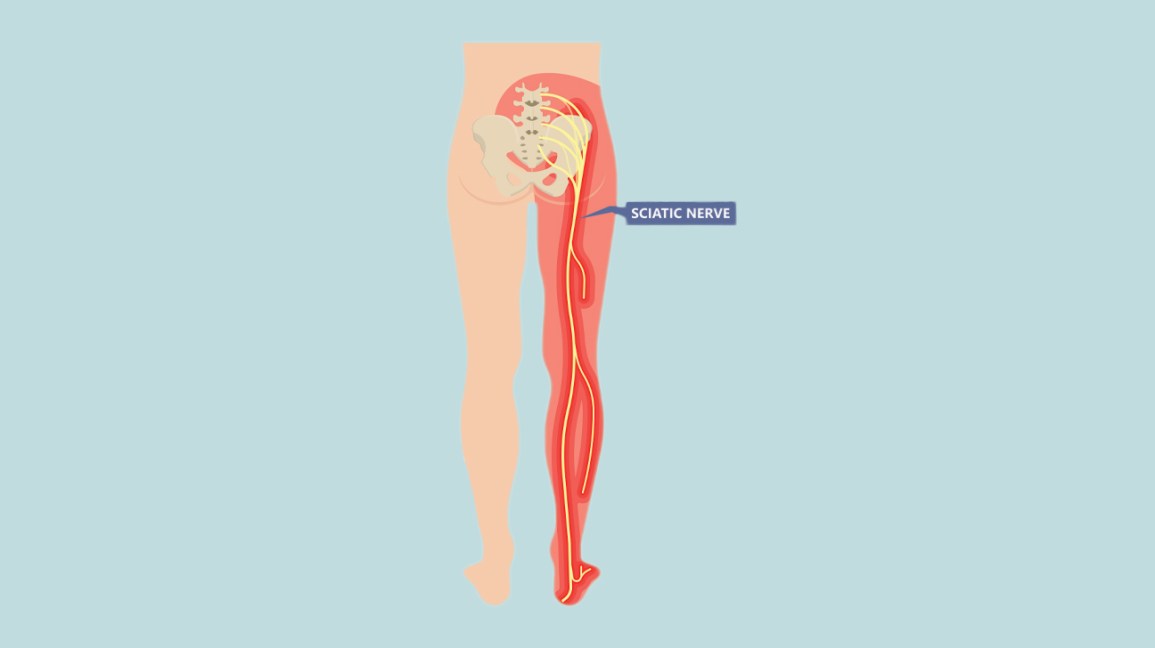Back
Sciatica & Low Back Pain Vs Pelvic Floor Dysfunction
By Dr. Zarina Vitebsky, DPT, MSPT, PRPC, TPS, LPF, DN on 1/16/2023

Can Pelvic Floor dysfunction present as sciatica or chronic low back pain?
Sciatic symptoms may be caused by muscle tension and unstable joints. Pelvic bone pain, sacroiliac joint problems, and a condition called piriformis syndrome, a problem with one of the buttocks’ muscles, are all common causes of sciatic pain as well.
Sciatica and Pelvic Pain can be a disturbing set of symptoms to experience. Sciatica and pelvic pain can be an indicator of wide range of structural health issues. It can also be linked to the mind-body process and often is connected to highly charged, sensitive, or repressed emotional issues. The root cause can also lie with structural nerve issues, degenerative joint issues, or muscular concerns.
As Physical Therapists, we have always known that there’s a close relationship between the low back region and the pelvic floor.
The nerve root compression of the lower levels (L4, L5 and S1 and their resulting referred pain is often called “sciatica”. The Sciatic Nerve is formed where the L4-S1 nerve roots blend together outside of the spine: the term “sciatica” refers to irritation of this nerve, NOT the nerve root.
Sciatica pain:
is related to a problem of the nerve at the level of the piriformis muscle
is usually accompanied by stabbing or shooting pains
is usually easier to localize than referred pain
may also be associated with an additional or background, deep, dull ache
may be accompanied by other nerve related symptoms such as tingling, itching, burning or numbness
Travels behind the leg and sometimes down to the foot
The pelvic floor is a group of muscles and ligaments that attach around the bottom of your pelvis from the pubic bone in front, to the tail bone in back and around to the sides to both hip joints.
The openings of the urethra, anus and vagina go down through these muscles. Other muscles that attach to and support your pelvis and tailbone include back muscles, abdominal muscles, glutes and other hip muscles.
Recent studies show that more than 95% of women with low back pain have pelvic floor dysfunction as well.
Pelvic floor dysfunction and low back pain are often associated together because of how the pelvis is a key support for the lower back. When the pelvic floor muscles are not appropriately strengthened (too weak or too tight) or become harder to control, the lower back muscles are not getting the proper support that they need.
If you experience these symptoms in addition to pain in your lower back region, you may benefit from a pelvic physical therapy assessment and treatment plan.
We provide a skilled assessment
We help you figure out the actual source of the problem and if you have more than one area contributing to the problem.
We develop a comprehensive plan to help the problem– If your pain is lumbar-referred or radicular, you may need treatment on your back and not your hip or if you have two problem areas, both will need to be addressed within a comprehensive management plan.
We recommend further tests or refer you to another specialist if the problem does not appear to be in the musculoskeletal or nervous system.
For a full evaluation, or if you have any questions about lower back pain and pelvic floor dysfunction, contact us at www.pelvichealthnj.com or call 908-443-9880 and schedule an appointment at Pelvic Health Center of NJ.
Read More:
How Chronic Pelvic Congestion in Men Contributes to Prostatitis By Shannon Strauch, PTA, STMT-1 on 12/11/2024 How lymphatic issues can cause symptoms of prostatitis Prostatitis and Tight Pelvic Floor Muscles: A Comprehensive Guide By Shannon Strauch, PTA, STMT-1 on 12/10/2024 How a tight pelvic floor can be the reason for prostatitis symptoms
Are you ready to live pain free?
Request An Appointment